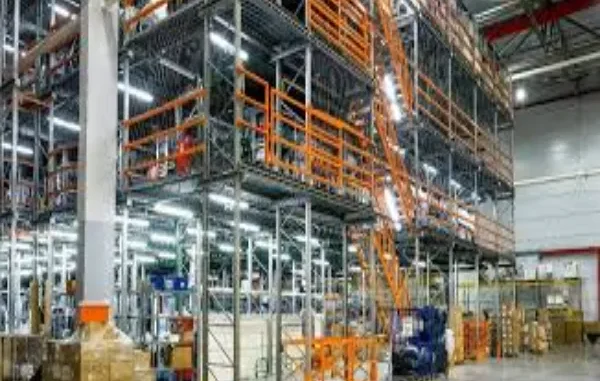
As e-commerce and omnichannel fulfillment accelerate at breakneck speed, warehouse space faces unprecedented strain. Conventional floor-level storage solutions are increasingly inadequate. Businesses now seek innovative methods to expand capacity, and vertical growth through mezzanine platforms has emerged as a strategic, cost-conscious solution. When thoughtfully integrated, a Warehouse mezzanine can significantly amplify operational throughput without enlarging the facility footprint.
Understanding Warehouse Mezzanines
A warehouse mezzanine is an intermediate level—either freestanding or affixed within an existing facility—designed to exploit vertical space. Unlike permanent second floors, these semi-permanent, modular structures enhance usable square footage without the expense or disruption of new construction. Constructed from structural steel, mezzanine platforms can accommodate storage, equipment, or office functions, fully customized to operational requirements.
Types of Mezzanines and Their Distinct Advantages
Various operational demands necessitate tailored designs. Common mezzanine configurations include:
- Freestanding Mezzanines: Exceptionally flexible, ideal for future relocation or expansion.
- Rack-Supported Mezzanines: Constructed atop pallet racks, maximizing cubic storage efficiency.
- Shelving-Supported Mezzanines: Lightweight solutions for small parts storage or manual picking.
- Building-Supported Mezzanines: Integrated with existing walls, suitable for facilities with load-bearing architecture.
Each type offers unique benefits, contingent on industry-specific needs, spatial limitations, and workflow dynamics.
Why Vertical Expansion Outpaces Horizontal Growth
When property is scarce or expensive, upward expansion is a natural choice. Mezzanine platforms unlock previously unused airspace, adding a functional second layer without interrupting ground-level operations. Unlike horizontal additions, vertical solutions require no extra land acquisition or prolonged production pauses—making them ideal for fast-moving businesses.
Cost-Efficiency: Mezzanines Versus Facility Expansion
Constructing a new warehouse wing can exceed $150 per square foot, excluding downtime and permitting delays. Mezzanine platforms, by contrast, typically cost between $35 and $70 per square foot, providing a compelling return with minimal operational disruption.
| Feature | Facility Expansion | Mezzanine Platform |
| Average Cost per Sq Ft | $100–$150+ | $35–$70 |
| Time to Completion | Months | Several Weeks |
| Operational Disruption | High | Low |
| Flexibility | Fixed | Modular & Scalable |
Common Applications in Modern Warehouses
Warehouse mezzanines are incredibly versatile. Typical uses include:
- Overflow Storage: Manage seasonal surges or high-turn SKUs without cluttering aisles.
- Packing Stations: Elevate fulfillment zones to streamline workflow.
- Administrative Areas: Create climate-controlled offices above operational zones.
- Light Manufacturing: Facilitate assembly, testing, or inspection lines on upper decks.
- Equipment Integration: Accommodate conveyors, sorters, or lifts for improved accessibility.
This adaptability positions mezzanine platforms as indispensable for efficient facility design.
Integrating Mezzanines with Existing Infrastructure
Seamless integration is crucial. Installing a mezzanine requires careful planning of traffic flow, racking layouts, ceiling heights, lighting, and material handling equipment. Considerations for forklift access, overhead clearance, and emergency egress ensure both safety and functionality. Modern mezzanines also pair effectively with conveyors and vertical lifts for optimized movement between levels.
Safety Considerations and Compliance Standards
Compliance with OSHA and International Building Code (IBC) standards is non-negotiable. Key features include:
- Clearly marked load ratings
- Guardrails and safety gates
- Anti-slip deck surfaces
- Emergency egress pathways
- Fire suppression integration
Adhering to these standards mitigates accidents and safeguards both personnel and assets.
Modular Design and Future Scalability
One of the primary advantages of mezzanine platforms is modularity. As business needs evolve, platforms can be expanded, reconfigured, or relocated. This flexibility is ideal for growing enterprises seeking scalable solutions without long-term capital commitments.
ROI: Long-Term Value of Mezzanines
Financially, mezzanines are compelling. Beyond lower upfront costs compared to traditional construction, they enhance productivity by:
- Improving organization
- Reducing picking and processing time
- Establishing dedicated functional zones
- Delaying the need for costly facility expansion
Many systems repay their investment in under three years through optimized space utilization and operational efficiency.
Final Thoughts: Mezzanines as a Strategic Asset
In today’s warehouse environment, adaptability is paramount. Mezzanine systems provide a rare combination of affordability, flexibility, and rapid ROI. Whether scaling operations, adding workspace, or accommodating fluctuating inventory, mezzanine platforms deliver exceptional value.
With strategic planning and professional installation, these structures do more than expand space—they elevate the operational capability of your entire facility.






Leave a Reply